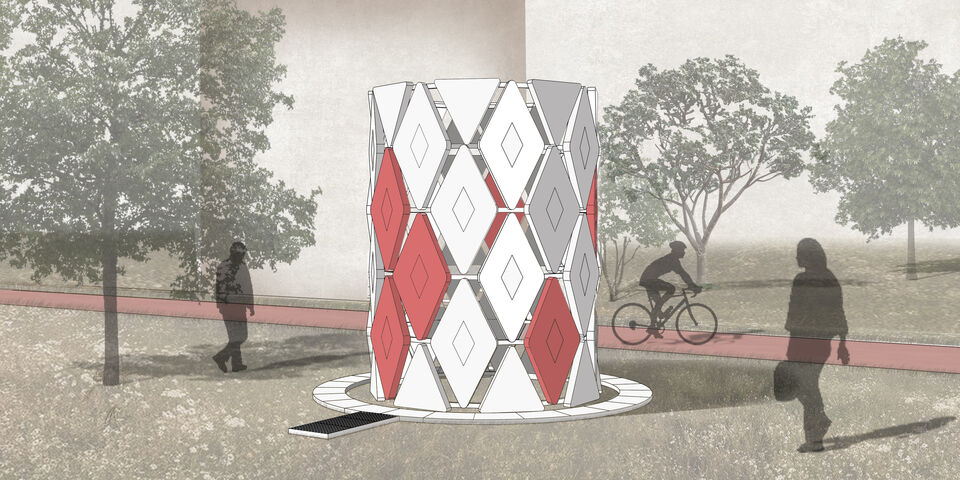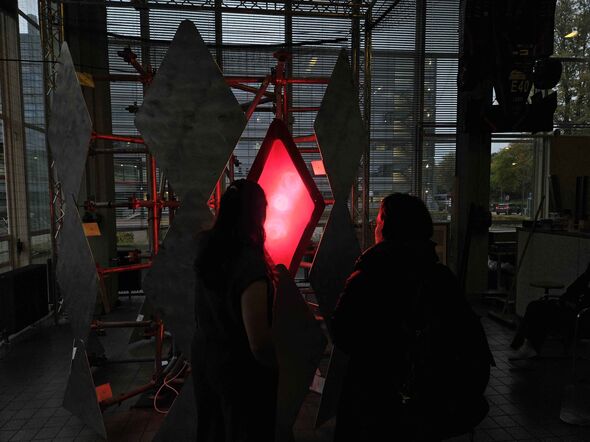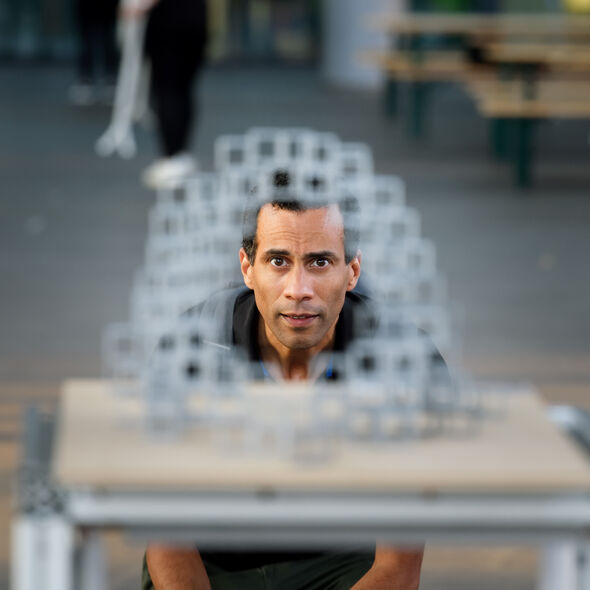GLOW: IGNITE creates light art for the visually impaired
Light art for people who can’t see well? IGNITE didn’t make it easy for themselves this year. The TU/e student team chose people with visual impairments as the target audience for their installation at GLOW, the light art festival that kicks off in Eindhoven this weekend.
Perception—that’s the name of the new light installation by student team IGNITE. “The installation doesn’t just emit light; it also produces warmth and sound,” says Phoebe Dusil, Computer Science bachelor’s student and member of IGNITE.
The artwork will be on display from November 8 through 15 during GLOW. For twenty years, this light art festival has illuminated the dark November nights in—and by now, also around—Eindhoven. IGNITE has been part of the event since 2017. Each year, the students design light installations with a social message; last year’s work, for instance, focused on light pollution.
Anne Frankplantsoen
This year’s installation is made for people with visual impairments, but it also lets the general public experience how to rely on senses other than sight. That’s why the artwork is placed in a less well-lit area. “At the Anne Frankplantsoen, slightly off the main route,” says Liz-Anne Schmaal, second-year Industrial Design student and also a member of IGNITE.
The light emitted by Perception itself follows a simple, high-contrast pattern. “Too much variety and too many details make it difficult for people with impaired vision to understand an installation,” explains Dusil. The students received this advice when they spoke with members of their target group.
Tactile paving
So what does Perception look like? Dusil explains: “From the main route, we guide visitors toward the installation using paving tiles with ridges and bumps, allowing people with a white cane to orient themselves.”
The artwork is cylindrical, measuring 2.6 meters in both height and diameter. Schmaal shows a diamond-shaped aluminum plate—forty of these will cover the installation. “We’ll sand them to give them a glossy finish, and another sixteen panels will be covered with fabric,” she says.
In addition to light, the inside of the cylinder emits sound and warmth. An atmospheric soundscape of low-frequency tones emanates from the subwoofer. The heat is produced by infrared light and increases as visitors move closer to the installation. “It’s an interactive feature that’s also sustainable, since it reduces the installation’s power consumption.”
Gorinchem
After GLOW, Perception will also be exhibited at the Future Lighting event in Gorinchem. And after that? “We’d love for the installation to find a permanent home—perhaps on campus,” say Dusil and Schmaal. But for now, they’re mainly looking forward to seeing how the GLOW audience will respond.
Former TU/e researcher Philip Ross appointed new director of GLOW
As of January 2026, Philip Ross will take over from Ronald Ramakers, the current director of GLOW. Ross, who is already closely involved in the upcoming edition of the light festival as part of his onboarding process, is no stranger to TU/e. He earned his PhD and later taught there before starting his own light design studio. Since then, he has remained involved in TU/e’s contributions to GLOW.




Discussion